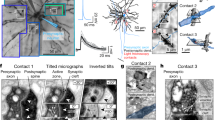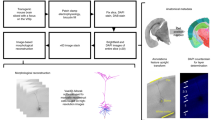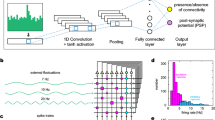Abstract
THE complex heterogeneity of cell populations in the nervous system severely limits the study of many important questions in neurobiology. Improvement of the current techniques of neuronal cell culture will require methods for selective isolation of neurones belonging to specific functional classes. Present methods include a degree of separation of neurones from non-neuronal cells by physical methods1–3 but these differentiate only on the basis of size or density. The separation of classes of tumour cells and lymphocytes has been accomplished by affinity chromatography using lectins or antibodies against surface antigens4–7. In principle neurone purification could be approached in the same way. Among other surface identities, neurones have neurotransmitter receptors which provide one basis for functional classification and potentially provide targets for affinity probes of high specificity. As a model system we chose the chick embryo sympathetic ganglion neurones which are known to possess high numbers of the nicotinic type of acetylcholine (ACh) receptor8. These cells also possess high numbers of receptors for α-bungarotoxin (αBT)9. We report here the successful separation by affinity chromatography of the principal neurones from sympathetic ganglia using αBT as a probe.
This is a preview of subscription content, access via your institution
Access options
Subscribe to this journal
Receive 51 print issues and online access
$199.00 per year
only $3.90 per issue
Buy this article
- Purchase on Springer Link
- Instant access to full article PDF
Prices may be subject to local taxes which are calculated during checkout
Similar content being viewed by others
References
Harwood, B. Int. Rev. Cytol. 38, 369–403 (1974).
Campbell, G. LeM., Schachner, M. & Sharrow, S. O. Brain Res. 127, 69–86 (1976).
Poduslo, S. E. & McKhan, G. M. in The Nervous System, 1 (Raven, New York, 1975).
Killion, J. J. & Kollmorgen, G. M. Nature 259, 674–676 (1976).
Truffa-Bachi, P. & Wofsy, L. Proc. natn. Acad. Sci. U.S.A. 66, 685–692 (1970).
Venter, B. R., Venter, J. G. & Kaplan, N. O. Proc. natn. Acad. Sci. U.S.A. 73, 2013–2017 (1976).
Rutishauser, U., D'Eustachio, P. & Edelman, G. M. Proc. natn. Acad. Sci. U.S.A. 70, 3894–3898 (1973).
Phillis, J. W. The Pharmacology of Synapses, 123–148 (Pergamon, Oxford, 1970).
Greene, L. A. Brain Res. 111, 135–145 (1976).
Cuatrecasas, P. J. biol. Chem. 245, 3059–3065 (1970).
Tu, A. T. A. Rev. Biochem. 42, 235–258 (1973).
Chicheportiche, R., Vincent, J. P., Kopeyan, C., Schweitz, H. & Lazdunski, M. Biochemistry 14, 2081–2091 (1975).
Low, B. W. Proc. natn. Acad. Sci. U.S.A. 73, 2991–2994 (1976).
Dvorak, D., Gipps, E., Leah, J. & Kidson, C. Life Sci. (in the press).
Varon, S. & Raiborn, C. Neurobiology 2, 183–196 (1972).
McCarthy, K. D. & Partlow, L. M. Brain Res. 114, 391–414 (1976).
Bornstein, M. B. Lab. Invest. 7, 134–137 (1950).
Author information
Authors and Affiliations
Rights and permissions
About this article
Cite this article
DVORAK, D., GIPPS, E. & KIDSON, C. Isolation of specific neurones by affinity methods. Nature 271, 564–566 (1978). https://doi.org/10.1038/271564a0
Received:
Accepted:
Published:
Issue Date:
DOI: https://doi.org/10.1038/271564a0
This article is cited by
Comments
By submitting a comment you agree to abide by our Terms and Community Guidelines. If you find something abusive or that does not comply with our terms or guidelines please flag it as inappropriate.



